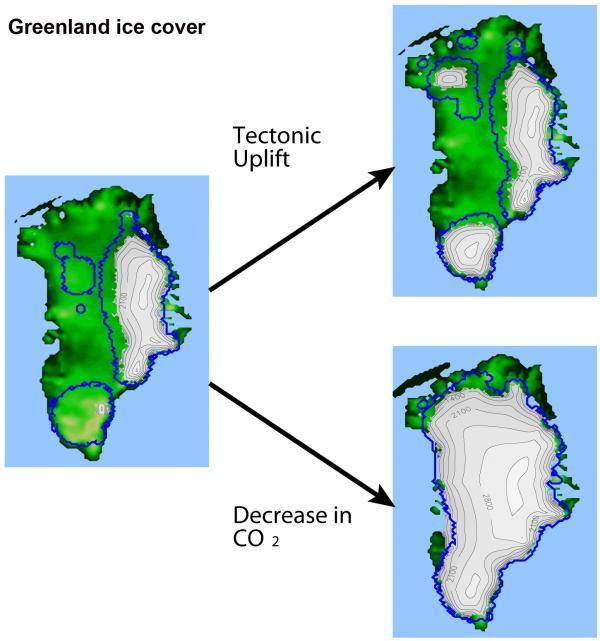Why is Greenland covered by ice?
Recently there have been a lot of media reports about the impact of global warming on the ice in Greenland. But so far people are not sure why there is ice there.
In the August 28 report in Nature, scientists at Bristol University and Leeds University have demonstrated that only changes in the amount of carbon dioxide in the atmosphere can explain why Greenland has since an island with almost no ice around 3 million years ago was completely covered with ice as it is today.
Understanding why ice formed on Greenland about 3 million years ago will help us understand how ice changes to climate change in the future.
Dr. Dan Lunt of Bristol University explained: 'Evidence shows that about 3 million years ago, the amount of soil and rock increased, the soil and rock collapsed to the seabed around Greenland. Perhaps they could not reach Greenland if the iceberg was not formed and carried them. This shows that the large amount of ice on Greenland has just begun to form 3 million years ago. '
'Before that time, Greenland had mostly no ice, and was covered with grass and forests. Moreover, the rate of carbon dioxide in the atmosphere is relatively high. So the question we want to answer is why is Greenland covered by ice? '

The computer model shows that although the elevation of the Rocky Mountains may contribute to thickening the ice covering Greenland, the increase is still far from the ice formed by the amount of gas. carbon dioxide decreases.(Photo: Dan Lunt, University of Bristol)
There are several theories that explain this phenomenon, such as changes in ocean currents, Rocky mountains, which rise in the Earth's orbit and naturally change in the concentration of greenhouse gases in the atmosphere. By using a computer model of ice and climate, Lunt and his colleagues decided to verify the most reliable hypothesis if any.
While the obtained results indicate that climate change is related to changes in ocean circulation and the increase in strata that affects the amount of ice covered, thicker or thinner ice corresponds to transform in Earth's orbit. But none of these changes are strong enough to explain the long-term development of ice on Greenland.
Instead, the new study shows that the most important cause of ice island formation is the rate of atmospheric carbon dioxide falling from high to the equivalent level in pre-industrial era. The concentration of carbon dioxide today is so high that Greenland has almost no ice covered at that time.
Dr Alan Haywood of Leeds University added: 'So why is the concentration of carbon dioxide in the atmosphere at a high level dropping to the same level as in the pre-industrial era? That's a million-dollar question that researchers won't hesitate to look for answers in the coming years. '
The study was carried out within the framework of the British Antarctic Survey. Dan J. Lunt was sponsored by the British Antarctic Survey and the UK Fellowship Research Council. Gavin L. Foster is funded by the NERC Research Fellowship. Emma J. Stone is sponsored by the NERC scholarship.
Refer:
Daniel J. Lunt, Gavin L. Foster, Alan M. Haywood, and Emma J. Stone.Pliocene Greenland glaciation controlled by a decline in atmospheric CO2 levels.Nature, 2008;454 (7208): 1102 DOI: 10.1038 / nature07223
- The 'alien' spectacle in the world's largest island
- Art of painting such as photos
- Greenland Island will be completely transformed by 2100
- See millions of years old radio stations under the Greenland ice sheet
- Why is Greenland full of ice, while Iceland is covered with greenery?
- Greenland ice melted six times faster, raising global sea levels
- See the beautiful Greenland, but it can soon be lost forever
- Sea ice near Greenland is at its lowest level in 800 years
- Greenland lost nearly 200 billion tons of ice in a month
- Half of the cause of Greenland warming is natural
- Discover the world's largest island President Trump wants America to buy
- Greenland ice suddenly melted massively
 Is the magnetic North Pole shift dangerous to humanity?
Is the magnetic North Pole shift dangerous to humanity? Washington legalizes the recycling of human bodies into fertilizer
Washington legalizes the recycling of human bodies into fertilizer Lightning stone - the mysterious guest
Lightning stone - the mysterious guest Stunned by the mysterious sunset, strange appearance
Stunned by the mysterious sunset, strange appearance